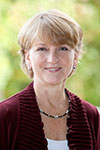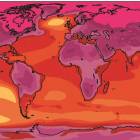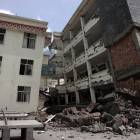Accelerating our Impact
Today, more than 1 billion people have inadequate access to energy, water and food. As the world population continues to grow to over 9 billion this century, demand for these resources will increase.
 "As the scope and urgency of Earth-related challenges grows, so does our mandate. We live in an era of responsibility—what we do today will determine the world in which our children and grandchildren live."
"As the scope and urgency of Earth-related challenges grows, so does our mandate. We live in an era of responsibility—what we do today will determine the world in which our children and grandchildren live."
Pamela A. Matson, Chester Naramore Dean
Richard and Rhoda Goldman Professor of Environmental Studies
Senior Fellow at the Stanford Woods Institute for the Environment
These needs must be met in spite of obstacles posed by climate change—including extreme weather events, less certain crop yields, and water limitations—and in ways that sustain our planet’s environment and resources for future generations.
The Stanford School of Earth, Energy & Environmental Sciences is in a unique position to make an essential contribution as the global community rises to this challenge.
Now is the time
On the scientific forefront of these issues for decades, our faculty have been among the first to identify complex planetary processes and problems and to engage in interdisciplinary approaches to solutions. From this position of leadership, we see that we can—and must—do more to address the Earth resource and environmental challenges with the highest stakes for human wellbeing.
To expand our impact, the School of Earth, Energy & Environmental Sciences is launching an ambitious initiative that will allow us to accelerate research, education, and problem solving aimed at meeting the resource needs of people while maintaining a safe and sustainable planet.
The initiative will drive educational innovations and leverage our strengths to advance research in four areas of particular concern to humanity: Securing the Energy Future, Climate Solutions, Reducing Disaster Risks, and Food and Water Security. Its success will depend on our ability to align many of the strengths of our faculty and students around these challenges. It will also require investments in new faculty to complement our existing expertise, new educational programs to train students for leadership in an increasingly complex world, and new infrastructure to enhance our capacity for transformative learning and research.







